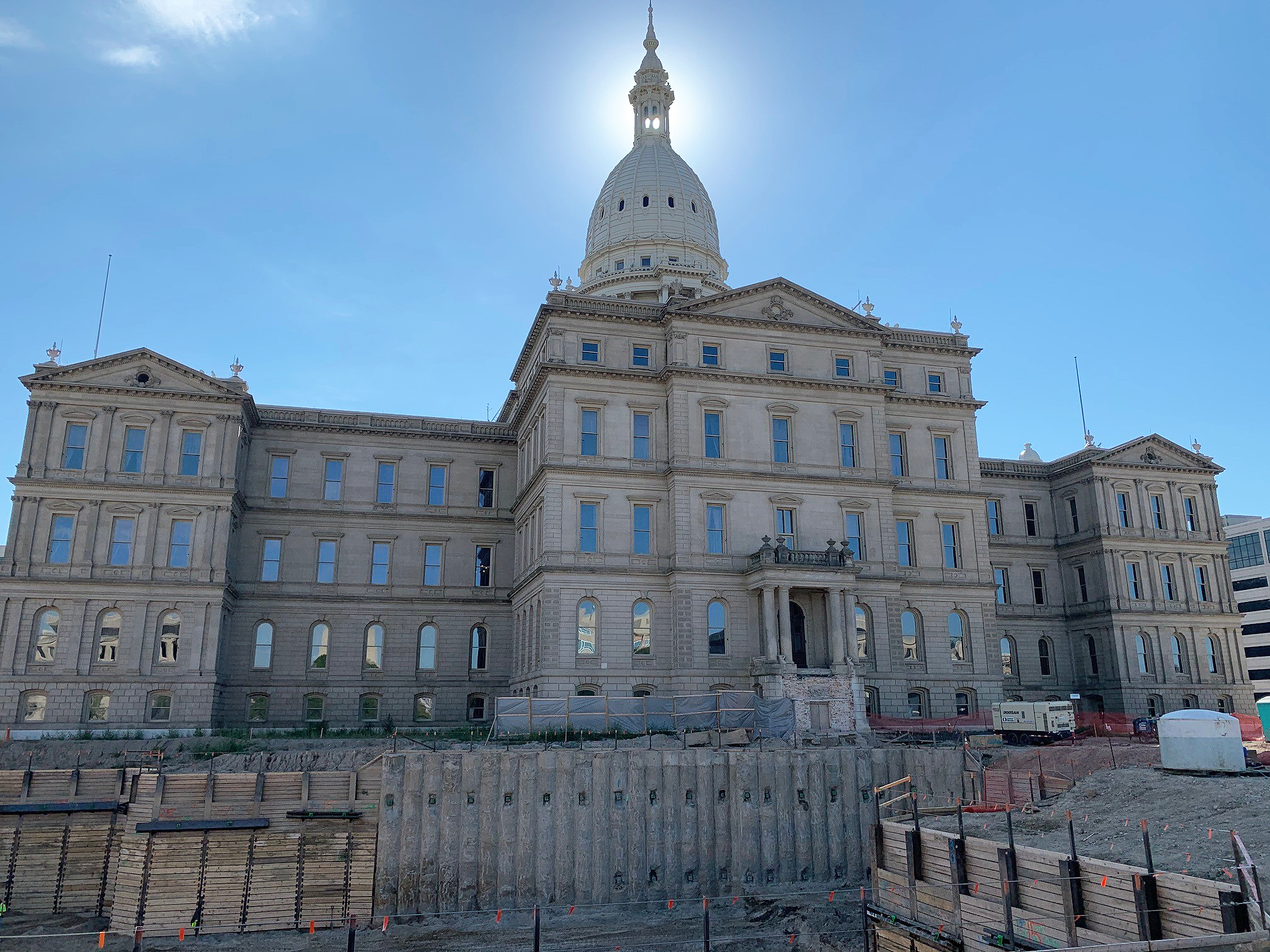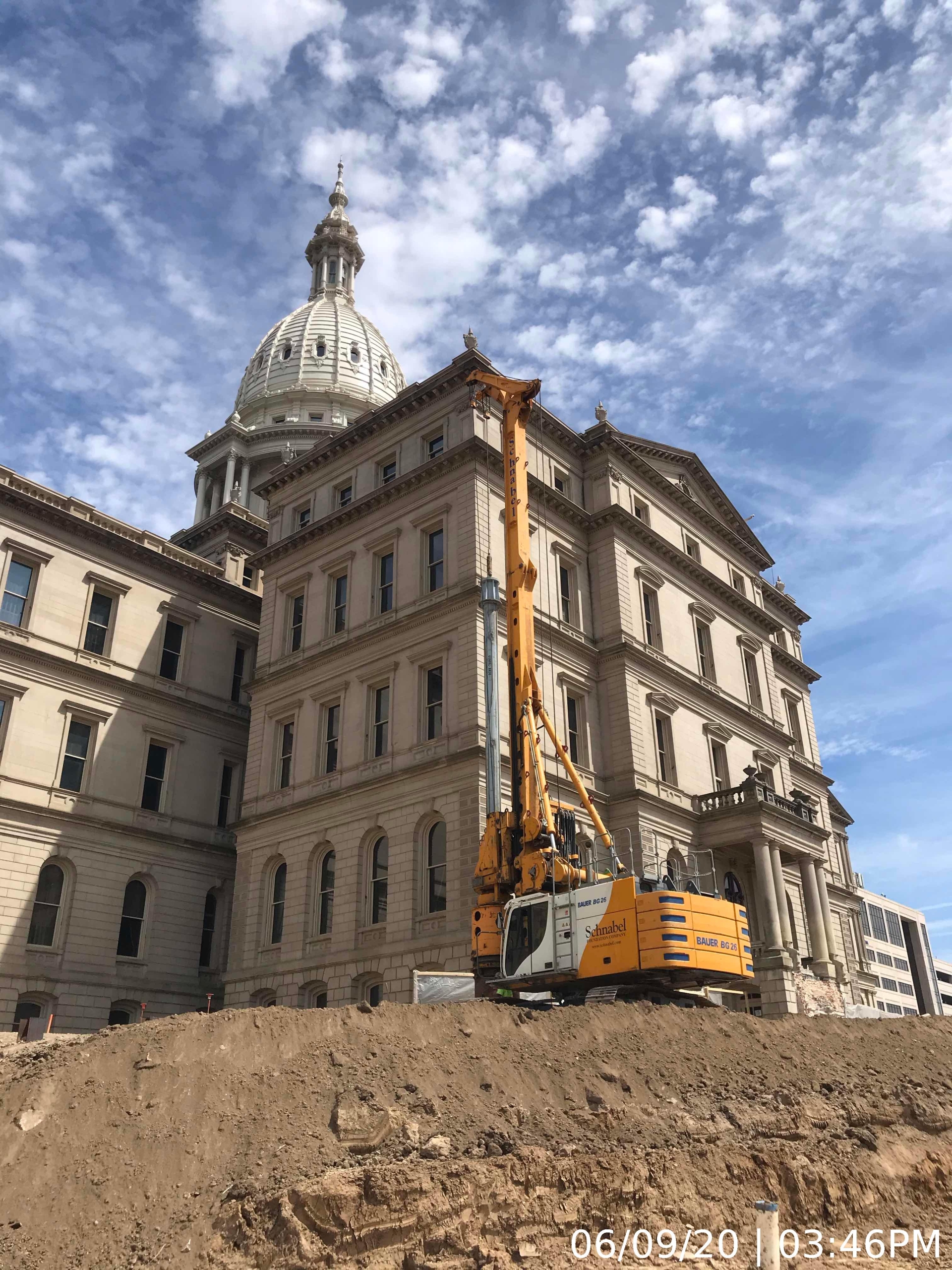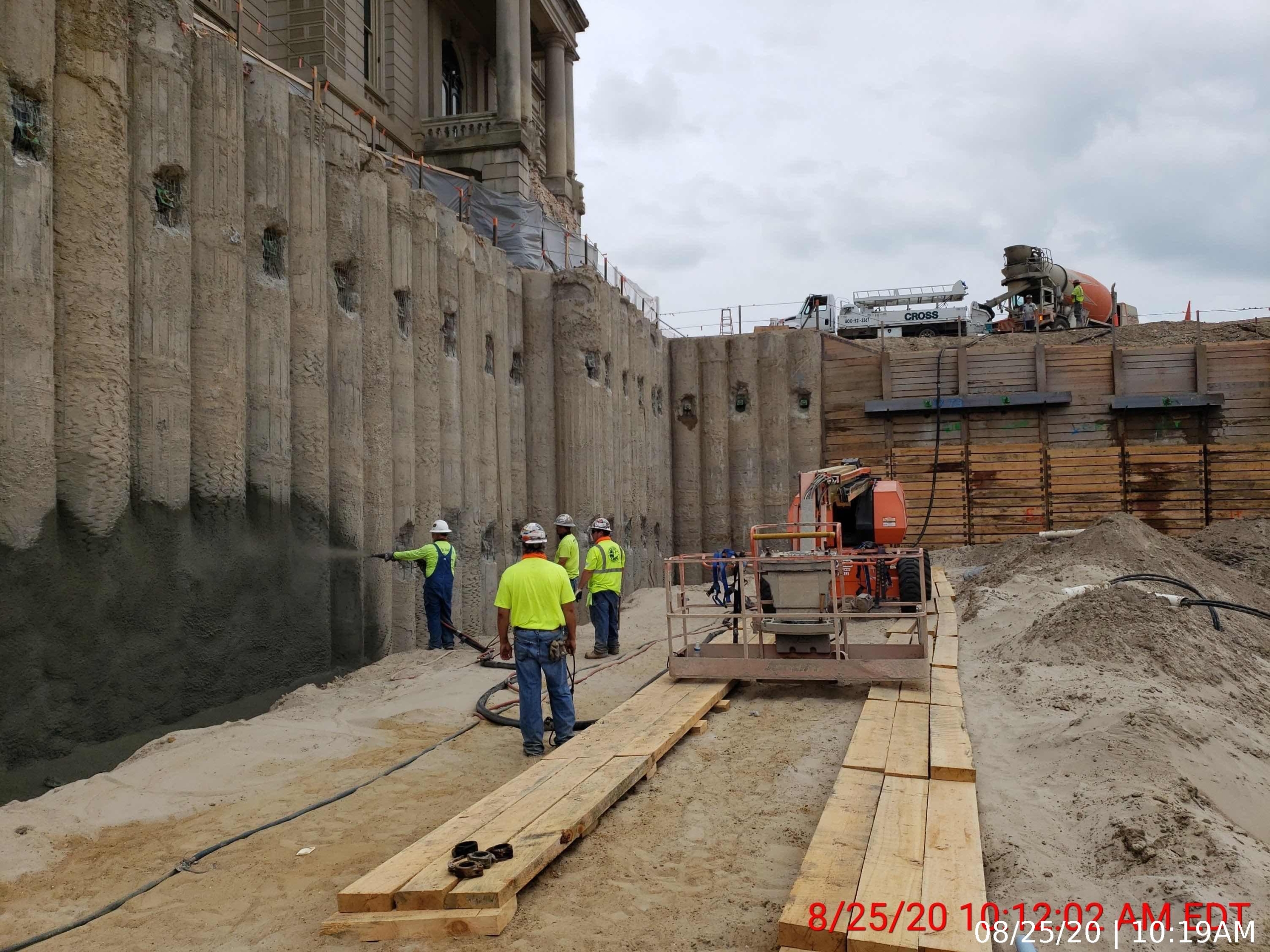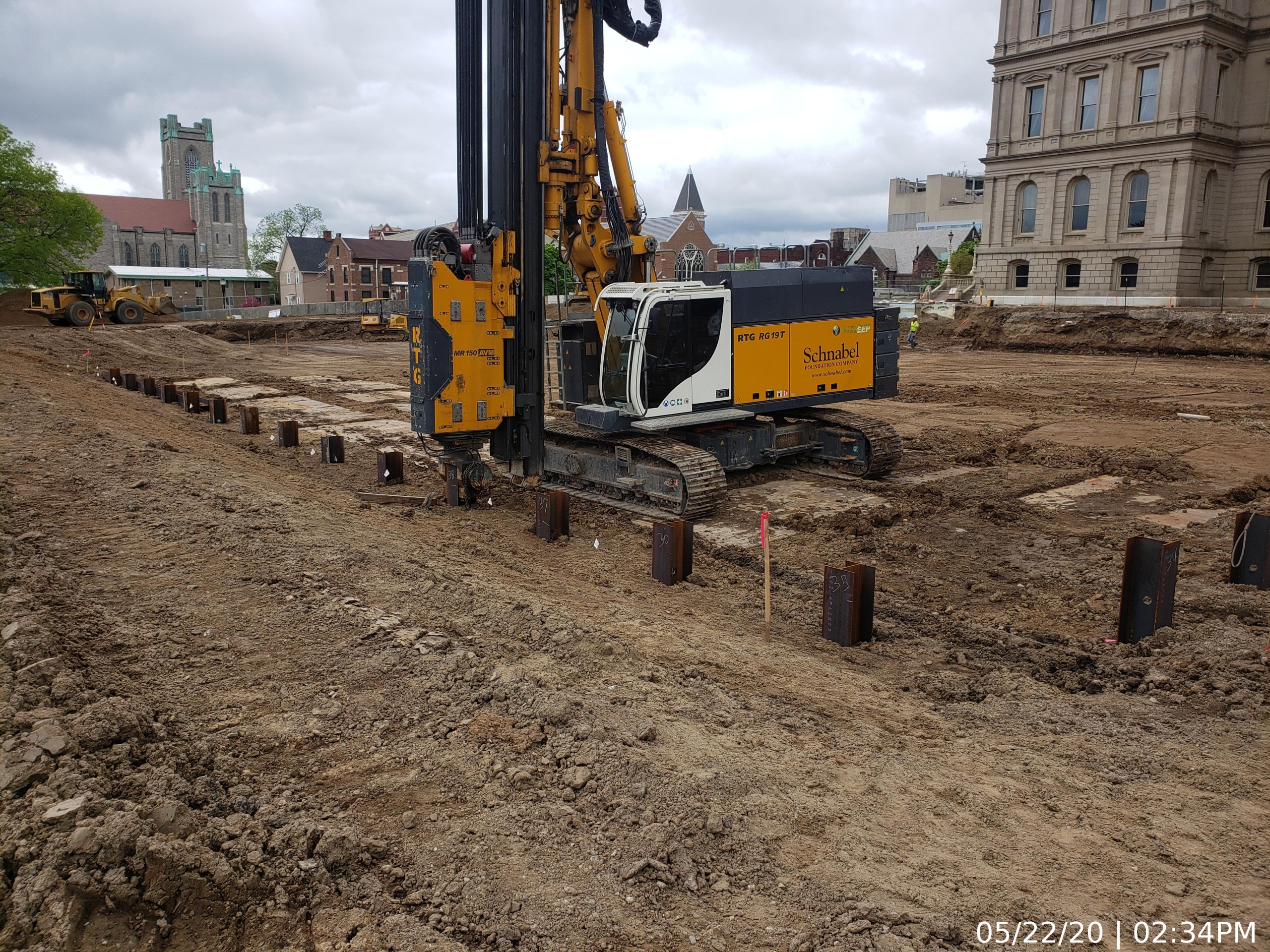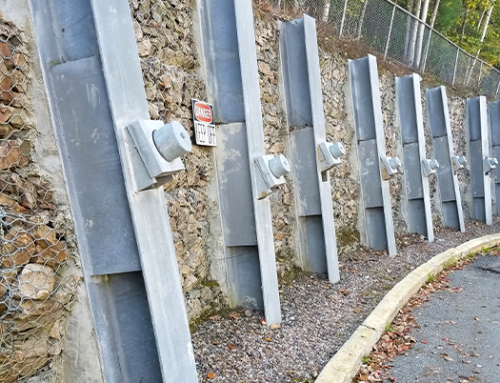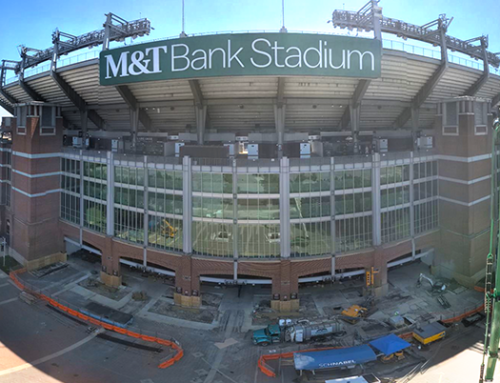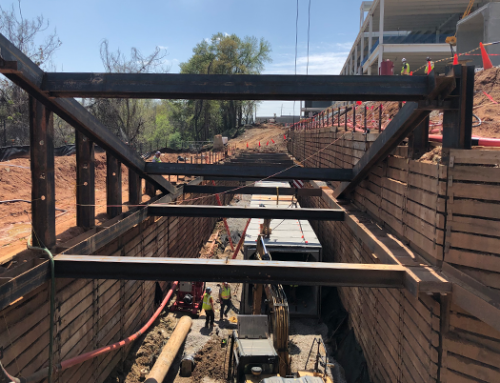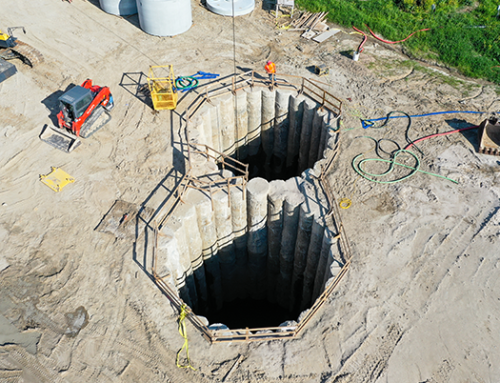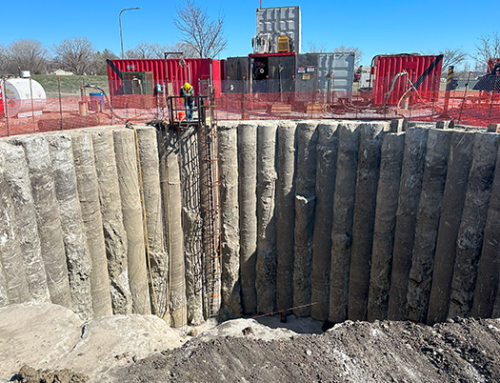City: Lansing
State: Michigan
Owner: The State of Michigan
General Contractor: The Christman Company
Project Description:
After 143 years of full service to both state lawmakers and the general public, the Michigan State Capitol Building has undertaken substantial improvements. These improvements included the Heritage Hall Visitor Center, an underground $40M expansion to the Capitol that will serve as the main entry point for school groups, tourists, and other visitors. Heritage Hall will consist of a 500-person auditorium and conference center with space for historical exhibits.
Schnabel was brought on to the project to provide both temporary and permanent excavation support. The average depth of excavation was 26 feet with up to two levels of tiebacks. A permanent secant wall with tiebacks was selected to control horizontal and vertical movements where shoring was required within the zone of influence of the Capitol. Temporary excavation support consisting of driven soldier piles, lagging, and tiebacks were used in all other areas away from the Capitol.
A solar powered automatic total station was used to continuously monitor twenty-five (25) locations on the Capitol and thirty (30) locations on the permanent and temporary excavation support. Three (3) seismographs located in the basement of the Capitol were used to monitor the vibration from nearby pile driving, secant drilling, and tieback drilling. An RTG RG-19T was first mobilized in May 2020 to drive soldier piles. The seismograph data was continuously monitored as pile driving approached the Capitol to confirm the vibration was below the threshold value. A Bauer BG-26 drill rig was then mobilized to install the secant wall that was located several feet away from the Capitol. Special care was taken to ensure that ground was not being lost during drilling. Both vibrations and movements on the Capitol were closely monitored during the drilling.
The tieback operation also had its own set of challenges. Tiebacks were installed around an array of newly installed geothermal wells. Every geothermal well within the tieback length was field verified to ensure our tiebacks would not conflict. The project also had two interior corners where tiebacks crossed. Careful drill alignment was required to weave the tiebacks between geothermal wells and other adjacent tiebacks.
The project was completed in September 2020 without exceeding the movement criteria of the Capitol or any of the excavation support. Tiebacks were successfully installed without striking any of the geothermal wells. The project was completed on time to the satisfaction of our client. Special thanks to everyone involved in this project.
